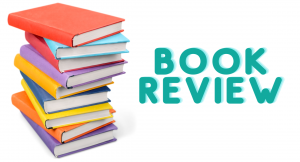When you think about book review sites, you might picture solitary activities like browsing reviews or updating your reading list. However, these platforms have evolved into vibrant communities where you can connect with other readers, discover new books through personalized recommendations, and join discussions that bring stories to life. Whether you’re looking to share your latest literary find or seek out niche groups that match your interests, these social features transform a solitary hobby into a shared experience. But how exactly do these sites build such strong communities? Let’s explore the unique ways each platform fosters these connections.

Goodreads: A Reader’s Playground
Goodreads is frequently regarded as the ultimate social hub for book lovers, offering a myriad of features that enhance your reading experience. You can join reading groups, partake in book discussions, and follow your favorite authors. Personalized recommendations based on your reading history keep your to-read list ever-growing. Additionally, user-generated reviews provide diverse perspectives, helping you make informed reading choices.
BookBub: Tailored Book Connections
BookBub offers a uniquely tailored experience for readers, leveraging personalized recommendations and exclusive deals to connect you with books you’ll love. By analyzing your reading habits and preferences, BookBub curates daily lists that cater specifically to your tastes. This targeted approach not only saves time but also enhances your reading journey, ensuring each book you discover aligns with your interests and literary inclinations.
LibraryThing: Niche Literary Groups
LibraryThing’s niche literary groups offer a vibrant community where you can explore deeply into specialized interests and connect with like-minded readers. You’ll find groups dedicated to everything from obscure sci-fi subgenres to classic literature discussions. These groups foster detailed conversations and personalized book recommendations, making it easy to immerse yourself in your literary passions and cultivate meaningful, intellectual exchanges with fellow book lovers.
Bookish: Interactive Book Clubs
Unlike the niche literary groups of LibraryThing, Bookish offers an engaging experience through its interactive book clubs, where readers can participate in dynamic discussions, attend virtual author events, and create personalized reading lists tailored to their interests. You’ll find these features foster a sense of community and deepen your reading experience, making Bookish an invaluable resource for avid readers seeking rich, interactive literary engagement.
 reviews; they’re creating vibrant communities where you can share opinions and discover new authors. This shift is democratizing how books are found and discussed, impacting which stories gain popularity. But have you thought about how this trend influences the publishing industry and even shapes the careers of writers? There’s much more beneath the surface of this digital evolution, especially when it comes to understanding reader preferences and market dynamics. Let’s explore how these changes are unfolding.
reviews; they’re creating vibrant communities where you can share opinions and discover new authors. This shift is democratizing how books are found and discussed, impacting which stories gain popularity. But have you thought about how this trend influences the publishing industry and even shapes the careers of writers? There’s much more beneath the surface of this digital evolution, especially when it comes to understanding reader preferences and market dynamics. Let’s explore how these changes are unfolding.